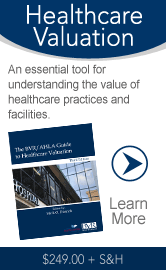 |
 |
Issue #28-1 | October 23, 2014

New protection for hospitals’ lost profits due to Ebola The recent case of Ebola patient Thomas Eric Duncan may have required half a million dollars in treatments, but the hospital may never collect a dime. Duncan had no health insurance, so the hospital may have to write this off as charity care. Ebola treatments can cost a hospital $1,000 a day, according to a report from Bloomberg. New insurance: Hospitals can now purchase insurance that would cover losses due to a shutdown and quarantine due to an Ebola outbreak, reports Healthcare Dive. The insurance was created by Lloyd's of London underwriter Ark Syndicate, Miller Insurance Services LLP, and U.S. broker William Gallagher Associates. Insurance coverage for lost revenue arising out of a non-physical-damage event such as a voluntary or involuntary quarantine of facilities and medical professionals is not available on most business interruption coverage forms, according to the companies that announced the new insurance. New study says hospitals are using 340B program to improperly boost profits Hospitals are using the 340B drug discount program to boost profits rather than help low-income and uninsured patients, concludes a new study in Health Affairs. Allegations of abuse: The 340B program (created by the Veterans Health Care Act of 1992) allows not-for-profit hospitals that serve large numbers of underinsured patients to buy medications from manufacturers at reduced prices. The study’s findings support allegations that hospitals participating in the program are looking to bring in extra money by targeting wealthier and/or insured patients. Hospitals participating in the 340B program aren't required to pass the discount along to patients or insurers and can subsequently turn a profit by charging the full price for medications the hospital bought at a discount. Hospital groups have vehemently denied that 340B providers engage in this practice. Extra: In a forceful response, the Safety Net Hospitals for Pharmaceutical Access (SNHPA) says the article “misses the mark.” For several reasons, “the article does not support the criticism that 340B DSH hospitals are no longer serving vulnerable patients.” Hospitals look to grow profits by providing medical insurance Many large hospital systems believe they have the branding power to launch a new line of business: selling insurance coverage to their patients. Infrastructure in place: Montefiore Medical Center in New York City will unveil insurance coverage to small business groups in 2015, reveals a report in Crain's New York Business. The hospital system, which currently treats one in three residents in the Bronx (where it’s based), already has the analytic infrastructure in place to run an insurance company. An integrated system such as Montefiore already has a significant portion of its costs under control and can share risk. This allows it to take advantage of the fact that group payers look for provider networks that are both clinically and financially accountable, according to Crain's. Two other providers in New York are also in the medical insurance business. The North Shore-LIJ Health System introduced the CareConnect insurance company in 2013, while the upstate multispecialty practice Crystal Run Healthcare also decided to get into the insurance business. Healthcare services sector trading performance and multiples The S&P Healthcare Services Index “has increased by 16.5% over the last three months [June-August 2014], significantly outperforming the S&P 500,” according to the September 2014 Healthcare Sector Update Latest multiples: The current median LTM revenue and LTM EBITDA multiples for the healthcare services industry overall are 1.65x and 11.2x, respectively. The sectors with the highest valuation multiples include: consumer-directed health and wellness (4.31x LTM revenue, 26.9x LTM EBITDA) and HCIT (3.45x LTM revenue, 17.6x LTM EBITDA). The report also provides data on the pharmaceutical/medical devices/life sciences sectors. Cost-cutting opportunity in managing medical devicesHospitals can significantly reduce costs by improving the supply management for medical devices, according to a new study in the American Journal of Managed Care. Three procedures: The study analyzed nearly 9,800 patients treated at 10 hospitals in a single metropolitan area between 2008 and 2010 for joint replacement, spine fusion, or cardiac rhythm management. It found that costs per procedure could drop by 14.5% for joint replacement, 18.8% for spine fusion, and 29.1% for cardiac rhythm management with better device purchasing. The authors of the study focused on those three procedures because they are typically high-volume and high-margin procedures for hospitals. The authors are James C. Robinson, Ph.D., and Timothy T. Brown, Ph.D., who are on the faculty of the University of California, Berkeley, School of Health. CMS says ACOs improve quality and save moneyAccountable care organizations created under the Affordable Care Act are meeting their goals of improving patient care while saving Medicare money, according to a Fact Sheet from the Centers for Medicare & Medicaid Services. Dollar savings: ACOs in the Pioneer ACO Model and Medicare Shared Savings Program generated more than $372 million in total program savings for Medicare ACOs, the agency says. ACOs also qualified for shared savings payments of $445 million; they saved the Medicare Trust Fund $386 million, the agency says. The results come from preliminary quality and financial results from the second year of performance for 23 Pioneer ACOs (which have more experience with coordinating care) and final results from the first year of performance for 220 Shared Savings Program ACOs, the CMS says. Value-based revenue emerging for not-for-profit hospitals Reimbursements to healthcare providers are shifting from fee-for-service to value-based, but that shift is happening gradually for not-for-profit hospitals. More than three-quarters of not-for-profit hospitals recently surveyed report that less than 10% of their revenue is associated with any form of risk-bearing contract, reveals a Kaufman Hall survey. However, almost two-thirds of respondents believe that within the next two years value-based payments will account for 10% of their revenue or more. Findings are based on an online survey of executives at not-for profit hospitals of varying sizes: 41% of respondents have 400 licensed beds or more, 26% have 200 to 399 beds, and 32% have 199 beds or fewer. Two-thirds are located in urban areas. Healthcare M&A stays strong
|
|
||||||
Business Valuation Resources, LLC
1000 SW Broadway, Suite 1200, Portland, OR 97205
(503) 291-7963 | editor@bvhealthcarenews.com
bvresources.com/healthcare

